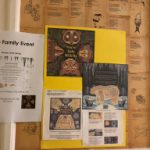In 2018 alone, I’ve done over 200 workshops in schools across the UK and US. Often teachers ask me how to interest children in writing – without them groaning and moaning, whining and whinging.
As part of my school visits or in specialised sessions, I work with teachers to help them bring fun into creative writing in schools.

The first blog post with suggestions and ideas for activities is here.
In this post, let’s look at FLEXING THE IMAGINATION MUSCLE!
Please feel free to try them out in your schools and when it works, do send me photos, emails, tweets to share the news with me.
Like any other skill, tapping into your imagination is a skill that needs to be practiced. We need our brains and creative energy to be agile and supple to take what’s around us or given to us and make them into stories. Humans have been telling stories for millions of years. Good storytellers not only practice dipping into their inner subconscious but also keep their language and cognitive abilities honed and tuned for that one killer story they want to tell.
So here are ways by which teachers can keep the imagination muscles of their children flexed and ready for that day when you want them to write stories, poems and get going with the writing.
- Word Association Games – this improves the vocabulary and at the same time can be fun and competitive in class. It can be played in groups or one to one, it can be a great tool not just to improve imagination, but also to build comprehension and spelling skills.
There are many ways to play this game – but my favourites are these two:
The first one – is simply to generate interesting nouns and verbs.
- Pick a random word from a hat, from a book, or from around the room.
- Now the group should come up with five different related nouns and verbs. If the associated words are not obvious, they should be able to explain why they chose it. Remember, there is nothing right or wrong about their choice – but we are flexing their imagination as to why they associated those words with the added benefit of comprehension.
The second one is a story-starter. Again it can be played individually or in groups
- Open the dictionary to a random page, find a noun a
- Ask the following questions:
- Who owns this?
- What does it look like?
- Who wants to steal it?
- The teams should write down the answers and start their story from here.
2. What-If: This is a great way to trigger the out of box ideas. This technique is also used by most professional writers.
In a classroom setting, you can start off with a prompt – either an image or a physical object or a word.
Here is an example.
 What if my Grandma’s chair is a time travelling machine?
What if my Grandma’s chair is a time travelling machine?
Once you have generated a question that has potential, the team should then dig further into the what-if and keep continuing until they see the story emerge.
So continuing from the above what if – here are my next three.

What if she sits and is transported to the Bronze Age?
What if she took my maths homework with her and I need it back?
What if I went after her and had to rescue her from the Bronze Age humans?
Want more tips? Find out more at www.chitrasoundar.com/kids/?p=314

























